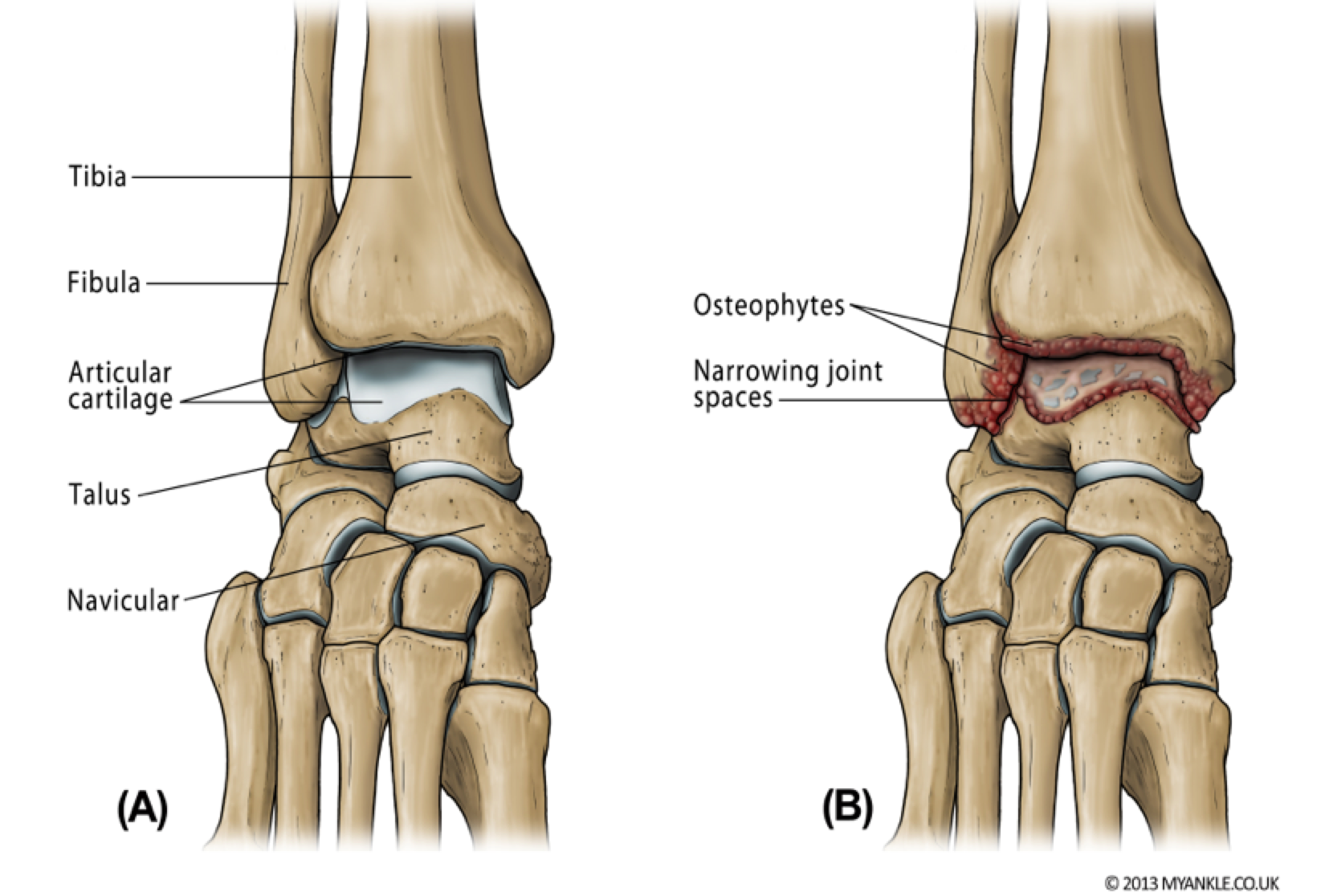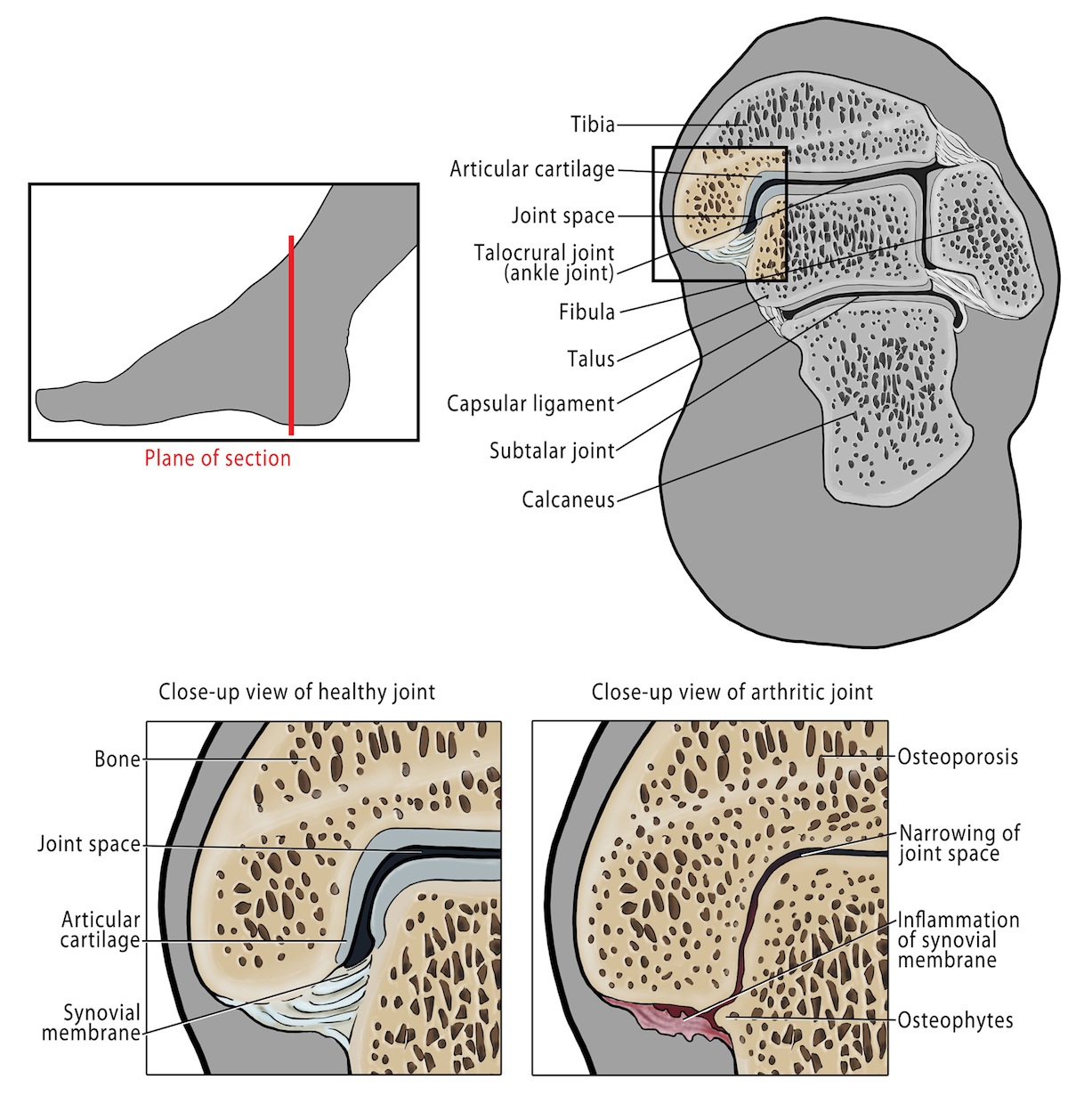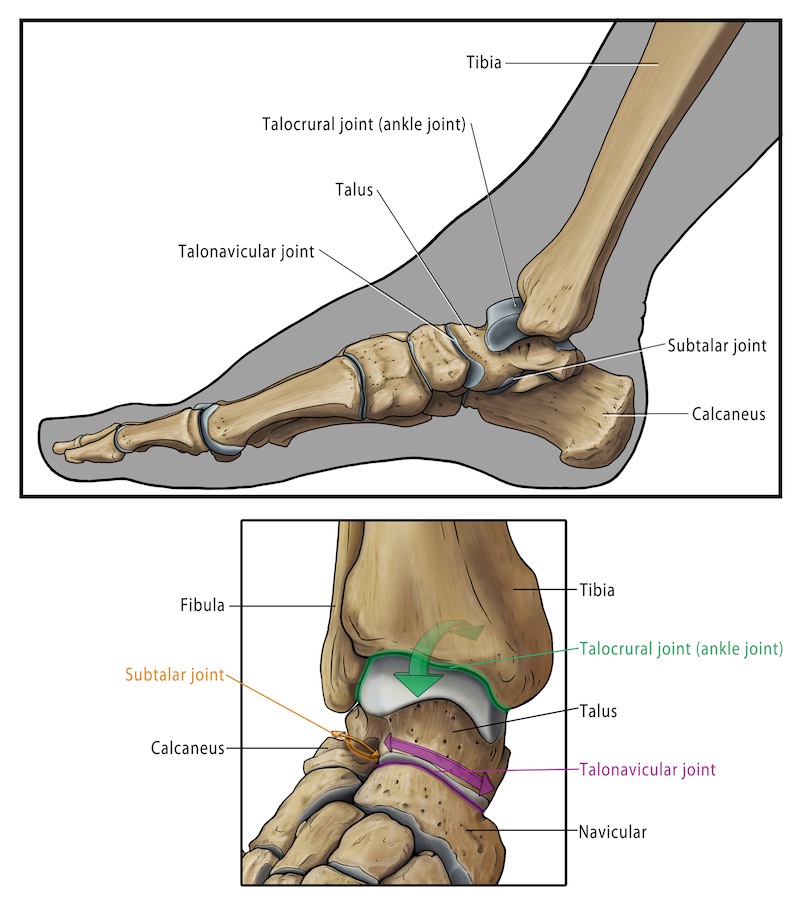Ankle arthritis can affect your quality of life as much as end stage heart failure. In this article we explore ankle arthritis and osteoarthritis.
What Is Ankle Arthritis?
What goes wrong in ankle arthritis?
In ankle arthritis, the cartilage is worn and the bone starts to rub on the bone. Resulting in ankle joint pain. As with other joints, articular cartilage lines the bones surface. This is a form of shock absorber, allowing smooth gliding motion during walking and running. The normal smooth motion of the joint is affected when this cartilage becomes worn. This can happen as a result of wear and tear or damage following injury or disease.

Often, extra bits of bones form, which together with scarring of the joint capsule are responsible for joint stiffness.
Defined as “end-stage”, Ankle osteoarthritis is where all non-surgical treatments have failed.

Ankle normal structure and function
The lower end of the tibia (shin bone) and the talus, also known as the tibiotalar joint, both form the ankle joint.
The ankle joint works like a hinge. It allows upwards and downwards movements. However, unlike a hinge, there is also some sliding and rotation of the talus within the ankle joint. In addition, movements also take place in the joints close to the ankle joint.
The subtalar joint, or joint below the ankle, is responsible for side-to-side movements. This includes walking on an uneven surface. In front of the ankle joint is the talonavicular joint. Also used when walking, this is involved in the twisting movements of the arch of your foot. In normal joints, there is a layer of cartilage, which acts as a shock absorber and allows smooth gliding motion.
What Treatment Options are available for ankle arthritis?
The good news is that the majority of cases of ankle arthritis do not need surgery. Activity modification, weight loss, pain killers and physiotherapy are examples of non-surgical treatments that can be tried. In addition, an ankle support or ankle brace can also be used.
Surgery can be an option if non-surgical treatments have been tried but ankle pain is still being experienced. Surgery involves either keyhole surgery, an ankle replacement or ankle fusion. You are best advised to see a specialist to establish which is the most appropriate treatment for you.
Did you enjoy this article? You may also like; Ankle Fusion Surgery
Which is better ankle replacement or ankle fusion?


